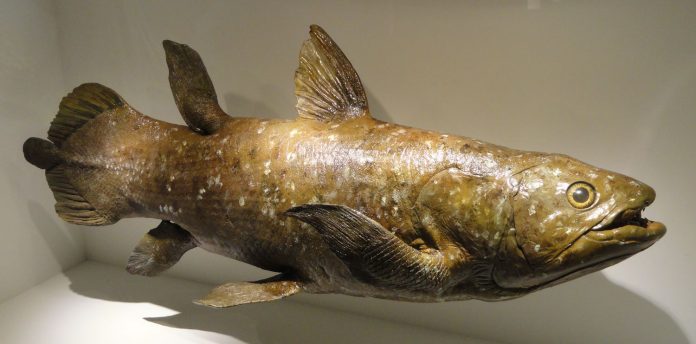Coelacanths have been called a “living fossil” because the fish have been around for at least 300 million years and the most exacting genetic information shows the fish evolve very slowly. Magali Naville, Domitille Chalopin, and Jean-Nicolas Volff from the Institut de Génomique Fonctionnelle de Lyon at the Ecole Normale Supérieure de Lyon in Lyon, France have shown that coelacanth’s genetic structure has recently been modified by external sources.
Two types of coelacanths live in the world at present. Latimeria chalumnae has been found in South Africa and Latimeria menadoensis lives in Indonesia. The two species differ slightly in appearance and genetics but are thought to have had a common ancestor.
The researchers examined the regions of the coelacanth’s genes that are most likely to have experienced an influence from an external source like bacteria or viruses. The scientists found 27 instances of genetic evolution produced in the living fossils by the insertion of small bits of DNA from bacteria. This is the first genetic proof that the coelacanth genome is not inert but has been altered within the last few centuries and possibly even in the last few decades.
The exchange of genetic material between species is not a rare event nor is the adaptation a recent occurrence. Most ancient species that are extinct have been shown to have exchanged DNA with other species. The first multicellular organisms known to have existed on Earth have been shown to have exchanged DNA with other species. The discovery that coelacanths have evolved is substantial proof that the fish have endured for more than 300 million years.















